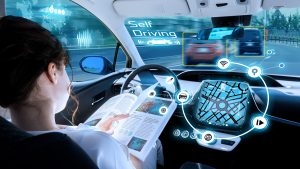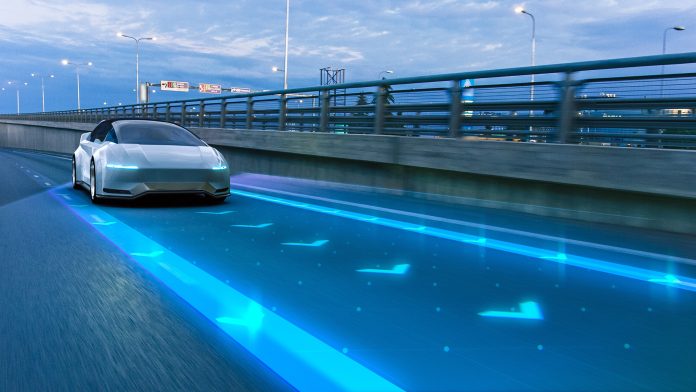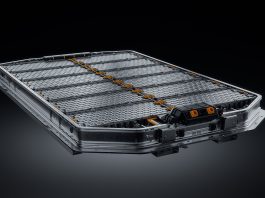Autonomous vehicles will hit the roads by 2026, but what are the benefits and practicalities of widespread implementation?
The UK Government envisions a future where self-driving vehicles play a significant role in transportation. It is a sector that holds immense promise, with the potential to revolutionise our lifestyle, maximise the efficiency of our transport infrastructure, and enable the country to meet its green targets. With the technology already in development, it is time to consider the practicalities of widespread implementation.
The Institution of Engineering and Technology (IET) is working to facilitate innovation and advancement in areas such as the automated transport sector. Providing expertise, the IET is a membership organisation working with policymakers, local authorities, and industry to feed into standards and regulations for automated vehicles – this ensures considerations can be made at a local and national level.
Sunil Budhdeo, Transport and Innovation Manager for Coventry City Council and IET Transport Expert with 35 years’ experience completing a variety of successful innovation projects in the Traffic and Transport industries. He spoke with The Innovation Platform on the outlook for automated transport in the UK, its challenges and benefits, and the next steps in its implementation.
What are the societal, economic, and environmental benefits of automated vehicles?
Socially, the opportunity to engage with autonomous vehicles in an urban environment will be invaluable for vulnerable users who are restricted to their homes simply because they can no longer drive. Though the average life expectancy has increased, the aged population can often be isolated. Autonomous vehicles provide on-demand transport, allowing local authorities committed to diversity and equality to keep people engaged and prevent isolation.
The pandemic affected an increase in distribution and logistics, meaning the number of vehicles to support this has likewise increased. This has created an opportunity to utilise autonomous and electric vehicles for this purpose, enabling us to have multiple engagements with distribution and logistics companies. Rather than relying on several different operators, autonomous vehicle technologies could be employed to pick up and deliver in an area from a distribution hub, creating a more efficient, economical, and comprehensive delivery operation. This is part of a larger logistical attempt to engage with local councils to create an intelligence hub.
The most significant benefit of autonomous vehicles is environmental since the technology allows us to communicate with vehicles and could, therefore, be utilised to manage congestion and emissions. For example, remote connectivity in vehicles could be developed to connect to traffic signals at junctions, meaning congestion and the stop-start movements of traffic jams could be avoided. This will result in less braking, which, in turn, means fewer particulates – the main challenge of emissions control. Alternatively, if there are no traffic signals, the ability for vehicle-to-vehicle communication will create a network in which cars can recognise and adapt to each other’s speed and routes. For example, your vehicle is travelling at 30 miles per hour (mph) with 15 cars behind, while a car on the side approach is only travelling at 20 mph with three cars behind. By communicating, automated vehicles can use situational judgement to ensure the most efficient flow of traffic, again reducing both congestion and emissions.
With any new technology, all benefits, opportunities, challenges, and impacts must be looked at – the IET works with its experts to provide an independent voice for the industry, making recommendations on how best to utilise autonomous vehicles. This includes looking at costs, safety, and system operations.
Can you discuss some of your recent and ongoing research in the field of automated vehicles?
Coventry City Council was the first authority to have the UK’s largest project – the UK Auto Drive project – in 2018. In collaboration with Jaguar Land Rover, Tata Motors European Technical Centre, and Ford, this was a trial of autonomous vehicles in an urban environment. Test routes were then designed in Coventry and Milton Keynes, cities that presented entirely different scenarios. Milton Keynes is a fairly new city, with a gridded layout and more roundabouts than traffic signals, whereas Coventry is a historical city that presents its own challenges.
In the first trial, we demonstrated, at low speeds and with a safety driver, how the autonomous car could safely drive the streets of Coventry, engaged in live traffic without any closures. The success of this trial led us to advance to the famous ring road of Coventry, which is challenging at the best times, requiring the vehicle to drive 40 miles per hour.
Subsequently, in partnership with Highways England and funded by Innovate UK, we worked on creating a test bed to establish the infrastructure required for automated vehicles to operate safely. This considered the network of vehicle-to-vehicle communication, vehicle-to-infrastructure communication, and vehicle-to-anything else communication. We were able to assess what was required for safety by creating a 45km track and driving in a highway environment as well as urban and interurban environments.
Recently, we participated in the SAVER project, which focused on remote driving. Following a successful trial, a bid to extend the project was successful, which we will continue to engage with.
More autonomous vehicles are required to determine their benefits realistically. The technology is already in existence, and OEMs have the capability to engage with autonomy. It is infrastructure and legislation that this industry is waiting on, and these must be our next steps.
What are the challenges associated with automated vehicle development and widespread implementation? How can these be addressed?
The primary challenge facing autonomous vehicles is risk. It only takes one incident to delay the project by years, as was the case during testing in the US. To combat this, every trial is de-risked, which is in itself a challenge. One of the ways this is done is by engaging with the most vulnerable users – e.g., those who are partially sighted or disabled – to determine how they would interact with particular scenarios. A question often asked about autonomous vehicles is, how does it know when to stop? If someone is waiting to cross a road, human eyes will detect it, and we need to be confident that a vehicle will also. De-risking intends to address this.
A second challenge concerns the infrastructure and legislation for electric automated vehicles, which pose their own questions, including: How does an EV find a charge point and plug itself in to charge, and how does it know where to park? These are a few of the challenges identified through trials. We are now working towards developing inductive charging and the digitalisation of traffic regulation to accommodate these additional considerations.
As we proceed with trials, we are also continuously addressing the challenge of communication. The automated vehicle network we are striving for is going to be the panacea of communications. However, it is a huge project we are not yet ready for, and work must now be directed towards securing the appropriate bandwidth. A comprehensive 5G network that covers all areas equally is in development. Still, we are working with the communications industry as well as the Department of Transport (DfT) to develop a network with higher security – since a remote network must be able to defend against hacking and interference.
A key consideration in the widespread implementation of automated vehicles is ensuring it is, indeed, widespread. Autonomous vehicles should be equally accessible throughout the UK, with consistent standards, regulations, and infrastructure between local authorities. They should not need to recognise geographical boundaries but be able to travel seamlessly to their destination regardless of individual authorities. Currently, regulations vary from county to county and city to city. To maximise the efficiency of an autonomous road network, these regulations should merge standards for infrastructure – e.g., signs – that can be digitised for the vehicles. This is an issue the DfT is addressing, and those authorities not currently involved in this discussion must begin engaging.

How will automated vehicles affect existing urban planning and transportation infrastructure?
Though it poses its challenges, the practicalities of implementing the technology can be simple. To put a communication pod at an intersection or a junction, it is simply a cat five cable that’s required to plug in the device, and this could be done at the time of installing a fibre cable, or during the construction of a junction.
What we have to consider is whether integration is the aim at all. The big question is: Does the general public need to own a car? Automated vehicles have the potential to revolutionise the way we travel. With automated vehicles comes the potential for a pool of cars providing on-demand transport. Imagine that instead of buying a car, ordering a taxi, or renting a holiday car, a pool of automated vehicles could provide all three services for a lower price. For example, take the infrastructure of an estate; rather than having cars line the roads, there could be a readily accessible, communal, intelligent hub of cars, reducing congestion. In this case, we need to consider the storage infrastructure for such a hub, one that is widely accessible and within an appropriate distance of all users.
The development of autonomy on the roads could be extended to other modes of transport. If the technology works for cars, it could certainly be applied to buses, trams, and trains. Automated vehicles allow us to re-evaluate existing infrastructure, rendering traffic lights at slow-speed junctions largely unnecessary. Roads can be made narrower since a network of automated vehicles would not require any overtaking facility, increasing green spaces, reducing emissions, and making our roads safer.
What does the future look like for automated vehicles in the next five to ten years and beyond?
The future looks incredibly bright, particularly when we consider the achievements of the last five years. What many do not realise is that this technology is already employed in aspects of modern life. Most modern cars are equipped with multiple cameras that work to control speed, positioning, and braking. Cruise control enables cars to follow lane discipline and can adapt a car’s speed according to its surroundings.
The development of automated vehicles allows us to improve our environment, both in regard to meeting green targets and lifestyle. Cars, as a mode of transport, will not go away, but a communal intelligent hub could require a short walk. Creating an automated road network also increases efficiency; eradicating traffic jams means hospital appointments can be met, and flights will not be missed. We rely on transport for so many aspects of daily life that its simplification and improved efficiency could have huge repercussions.
The technology is here; we are only waiting on the legislation and infrastructure that must accompany it. Within the next five to ten years, we can expect continued innovation around the development of automated vehicles.
The UK Government has already announced that the UK will have autonomous vehicles and permission for vehicles to be operated in an autonomous mode by 2026. In fact, Ford’s Mustang Mach-E was permitted a license to drive in autonomous mode on motorways last year. The wheels are already in motion, and the next few years will only see this increase.
Please note, this article will also appear in the seventeenth edition of our quarterly publication.









